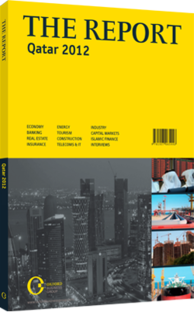Pushing development: A link is evident between policy changes and results
Reform and investment in the education sector is integral to Qatar’s National Vision 2030 (QNV 2030) goals. QNV 2030 defines long-term outcomes for the country and provides a framework within which national strategies and implementation plans can be developed. The national vision addresses major challenges facing Qatar through four interconnected pillars, with education playing a vital role in all of them.
NATIONAL DEVELOPMENT STRATEGY: Providing a blueprint for its long-term targets, Qatar’s First National Development Strategy 2011-16 (NDS) identifies priorities for the period and seeks to articulate specific actions and targets for every sector. Education plays an important role in the NDS, particularly in enabling progress under the “economic development” and “human development” pillars of QNV 2030. Strengthening the private sector and catalysing entrepreneurship are also central to this strategy.
In addition to helping achieve the country’s economic goals, education is crucial to human development, which identifies three broad results that Qatar will attempt to reach: 1) nurturing a healthy population; 2) building knowledge and skills; and 3) fostering a capable and motivated workforce.
Education is also important in driving change in the health care sector. Improving professional education and conducting high-quality research to support the health care system are identified as specific outcomes with explicit goals that include: 1) raising the number of medical school graduates from one to three per 100,000 people; 2) increasing the number of health professionals from 0.4 per 1000 people to four; and 3) producing at least four high-quality research papers per researcher in priority areas.
READY FOR WORK: Qatar’s strategy to develop human capital to diversify the economy forms a comprehensive framework within which the education sector will evolve. The strategy starts at the core of the system by developing education infrastructure. In parallel to this, the Supreme Education Council is reforming kindergarten through 12th grade education, starting with strengthening institutional capacity to cater to various needs and diversifying the school system through a hybrid model of private and independent schools.
The second area of focus is on preparing Qataris for employment in the knowledge economy through better higher education systems, including improved technical education and vocational training (TEVT). Initiatives to support change will include working with industry to determine areas and projects for TEVT partnerships. Specific benchmarks that will be used to monitor progress include increasing the proportion of students graduating with qualifications needed in the knowledge economy by 65-75% and reducing the proportion of Qatari students enrolled in Qatar University’s Foundation Programme to 50%.
ENCOURAGING INNOVATION: Finally, the strategy calls for a significant programme of research and development to drive local scientific innovation. Both Qatar Foundation and Qatar University will play key roles in the strategy, including developing research opportunities in scientific and technical industries, policy, social and business areas, innovative design, and culture and heritage. Furthermore, initiatives such as the Qatar National Research Fund and the Qatar Science and Technology Park will be important in bridging research and commercial applications.
The NDS recognises that while a highly skilled workforce is necessary for achieving a diversified economy, many Qataris do not pursue the necessary higher education. As such, the third goal for human development in the NDS is to incentivise Qataris to participate in the private sector and to take advantage of training opportunities and higher education.
Skills upgrading programmes and a comprehensive scheme to join the private sector will seek to boost overall productivity within the labour force. Expatriate talent will also play a key role, but Qatar will seek to shift its own citizens’ employment distribution towards a higher share of skilled labour, from 17% to 23%.
You have reached the limit of premium articles you can view for free.
Choose from the options below to purchase print or digital editions of our Reports. You can also purchase a website subscription giving you unlimited access to all of our Reports online for 12 months.
If you have already purchased this Report or have a website subscription, please login to continue.

